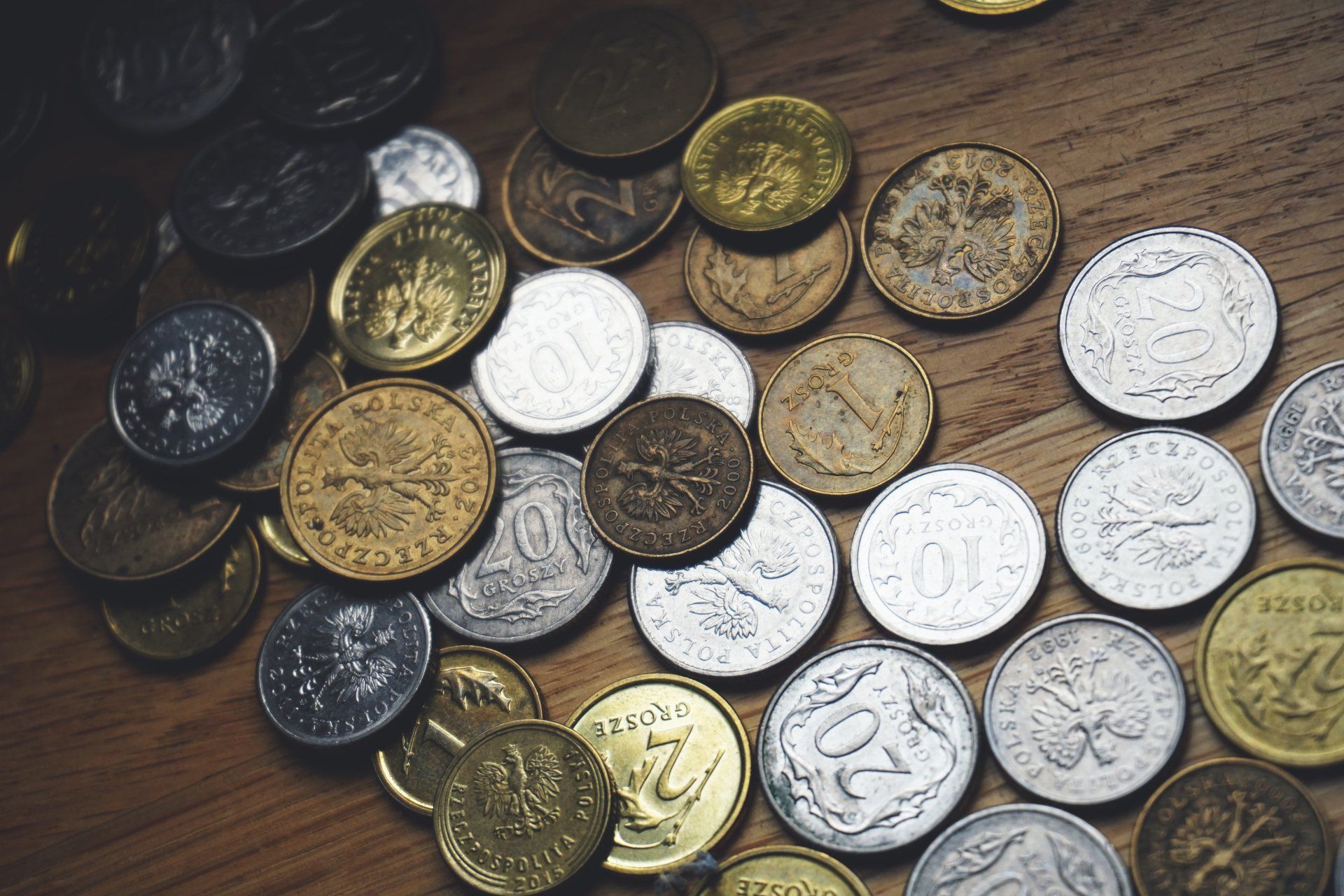
Rare Error Coins, The Thrill of the Hunt
If you've ever held a coin in your hand and wondered if it might be worth more than its face value, you're already on your way to understanding the allure of the numismatic world. Numismatics, the study or collection of coins, paper currency, and medals, takes a particularly interesting turn when it comes to error coins.
These are the rare pieces that, due to some mishap in the minting process, bear mistakes that make them unique and highly sought after by collectors. Think of them as the valuable misfits of the monetary world; their imperfections only add to their worth!
There's something undeniably thrilling about the hunt for these rare error coins. Like a treasure hunt, you never know what you might find in your pocket change or at a local coin shop. That 1965 quarter might have an off-center strike, or that shiny new penny might bear a doubled die obverse, making them more valuable than their standard counterparts.
The thrill isn't just in finding these rare pieces, though; it's also in the knowledge that you're holding a piece of history that went awry, a small deviation from the norm that makes it uniquely valuable.
In this article, we'll dive deeper into this exciting niche of the numismatic world, exploring various types of rare error coins and offering some tips for the hunt. From coins struck multiple times to those with the wrong dates, from off-metal coins to coins missing a mintmark altogether, we'll guide you through some of the most sought-after errors in the coin-collecting world.
With a bit of luck and a keen eye, you might just find that the loose change in your pocket isn't as ordinary as you think! So sit back, grab your coin jar, and let's embark on a journey through the fascinating world of rare error coins.
Planchet Errors
Navigating the landscape of rare error coins is a journey filled with surprises and oddities.
Let's start with planchet errors, which occur before the coin is struck. You might come across off-metal coins, those accidentally struck on metal prepared for a different denomination. For instance, a dime struck on a copper penny planchet will stand out with its unusual color.
Then there are clipped planchets, coins that seem to have a piece missing, as if it's been bitten off. But perhaps the most fascinating of planchet errors are the wrong planchet errors, when a coin is struck on a planchet meant for another denomination entirely.
Die Errors
Next on our treasure map are die errors. These mishaps occur during the creation of the coin dies, the devices that strike the designs onto the blanks. Among these are doubled dies, which occur when a die is inadvertently struck more than once by the hub, resulting in a doubled image.
You could also stumble upon repunched mintmarks, where the letter or symbol representing the mint of origin is stamped onto the die more than once, often at different angles. Inverted mintmarks, where these identifiers are mistakenly punched upside down, are another intriguing category to explore.
Strike Errors
Swing into the realm of strike errors and you'll find a whole new set of eccentricities. Off-center strikes occur when a coin blank isn't properly centered over the die, resulting in a coin with part of its design missing or extending beyond the edge.
Broadstrikes happen when a coin is struck without the collar that usually constrains it, causing the coin to spread outwards and form a larger than usual disk. Then, there are multiple strikes, where a coin isn't ejected properly and gets struck more than once, often resulting in a fascinatingly distorted appearance.
Miscellaneous Errors
Lastly, let's delve into a hodgepodge of miscellaneous errors. Among these oddities, you'll find mule coins, a mismatch of obverse and reverse designs from different denominations.
Overstrikes are another peculiar type, where a coin has been struck over a previously struck coin from a different country or time period. And then there are transitional errors, occurring when a coin is struck using the specifications from a different year, often during a change in design or composition.
Each of these errors adds a unique story to the coin and makes it a desirable addition to any collection.
Famous Rare Error Coins
The 1955 Doubled Die Lincoln Cent
One of the most famous of all error coins, the 1955 Doubled Die Lincoln Cent is a coveted treasure. Due to a one-time mishap in the minting process, these coins feature an unmistakable doubling of the date and lettering on the obverse side. Though the mint released thousands of these coins before the error was caught, they remain a rarity due to their popularity among collectors.
The 2000 Sacagawea Dollar/Washington Quarter Mule
The 2000 Sacagawea Dollar/Washington Quarter Mule is one of the most exciting error coins in modern numismatics. A "mule" coin refers to a coin that has been struck with dies intended for different denominations. In this case, the coin features the obverse of a Washington State Quarter and the reverse of a Sacagawea dollar. This error made headlines in the coin-collecting world and remains a cherished find.
The 1982 No Mint Mark Roosevelt Dime
Normally, a Roosevelt dime minted in Philadelphia bears no mint mark, but in 1982, an error occurred at the Denver Mint resulting in some dimes missing the 'D' mint mark. These 1982 No Mint Mark Roosevelt Dimes are prized by collectors for their scarcity and the unique circumstances of their creation.
The 1969-S Doubled Die Lincoln Cent
The 1969-S Doubled Die Lincoln Cent features an obvious and dramatic doubling on the obverse side of the coin. Despite being well-known, they are extremely rare, making them one of the more desirable error coins for collectors.
The 1972 Doubled Die Lincoln Cent
Lastly, we have the 1972 Doubled Die Lincoln Cent. Not to be outdone by its 1969-S and 1955 counterparts, this coin features significant doubling on its obverse, especially visible in the date and the word "LIBERTY". Despite thousands of these coins being minted, their popularity among coin collectors makes them a challenging and rewarding find.
Unearthing Treasures: Tips for Hunting Rare Error Coins
Mastering the Art of Coin Roll Hunting
Coin roll hunting can be a thrilling, though time-consuming, strategy for finding rare error coins. This involves sourcing rolls of coins from banks or purchasing them from online platforms and methodically searching through each coin. While it might seem daunting, don't underestimate the power of patience and persistence.
Remember, finding that one extraordinary coin can make hours of searching worthwhile! Keep in mind, though, that many banks may require you to have an account with them to get rolls of coins, and different online platforms may offer varying prices and quantities.
Building Connections at Coin Shows and with Dealers
Coin shows are another treasure trove for error coin collectors. These events offer a great opportunity to meet dealers, other collectors, and numismatic experts.
As you regularly attend these shows and interact with the community, you'll begin to develop a reputation as a serious error coin collector. Dealers may even start to set aside unique finds for you, knowing your specific interests.
Networking and building relationships within this community can prove invaluable, opening doors to coins you might not find elsewhere.
Tapping into the Power of Online Platforms and Communities
Lastly, let's not overlook the vast resources available on the Internet. Online auction sites and marketplaces, such as eBay, offer a plethora of coins from sellers worldwide.
It can be a convenient way to hunt for error coins from the comfort of your own home. Furthermore, joining error coin discussion groups and forums online can be extremely beneficial. These communities are often very supportive, offering advice, sharing their finds, and helping identify potential error coins.
Websites like CoinTalk or the Numismatic Guaranty Corporation’s chat boards are excellent places to start.
The Key Role of Authentication and Grading in Error Coin Collection
A Crucial First Step Finding a rare error coin can be a thrilling experience, but it's equally important to ensure its authenticity. With the advancement of technology, counterfeit coins have unfortunately become more common, making the verification process crucial. Comparing the potential error coin with a standard one, examining the coin's weight, and scrutinizing its details under a magnifying glass are some ways to validate its authenticity. However, the best course of action often involves consulting a professional.
The Expertise of Professional Grading Services
When it comes to verification and grading, professional services like the Professional Coin Grading Service (PCGS) and Numismatic Guaranty Corporation (NGC) play a pivotal role. These organizations employ numismatic experts who authenticate and grade coins based on their condition and rarity. The grading process involves detailed examination under magnification, as well as additional tests as required, before assigning a grade on a scale. Once graded, the coin is typically encased in a protective slab with its grade and other information displayed.
Deciphering the Impact of Grading on a Coin's Value
Understanding the grading system is key to appreciating the true value of your error coin. The condition or grade of a coin can significantly impact its market value, with higher grades typically attracting higher prices. For instance, an error coin in near-mint condition could be worth significantly more than the same coin in a worn state. It's also worth noting that certified grading provides assurance to potential buyers about the coin's authenticity and condition, which can be especially important when selling or buying rare error coins. Always remember, in the world of numismatics, knowledge is as valuable as the coins themselves!

